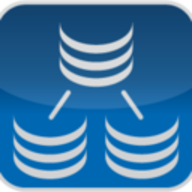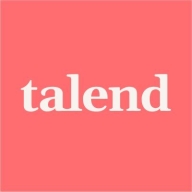

Find out in this report how the two Cloud Data Integration solutions compare in terms of features, pricing, service and support, easy of deployment, and ROI.

| Company Size | Count |
|---|---|
| Small Business | 22 |
| Midsize Enterprise | 13 |
| Large Enterprise | 18 |
JumpMind SymmetricDS is a powerful data replication software that provides synchronization software solutions for both databases and filesystems. This software is platform-independent and web-enabled as well as database agnostic. JumpMind SymmetricDS creates prompt bi-directional data replication while scaling to a large amount of nodes and working in close to real time across both WAN and LAN networks. This allows companies to integrate data using the feature for continuous change data capture.
This data replication software allows companies with limited network bandwidth or bad connectivity to benefit from excellent cloud conditions. The greatest benefit of JumpMind SymmetricDS is its vast integration across databases, streaming platforms, and data warehouses. Some of the relational databases where this data replication software can be used include Oracle, PostgreSQL, MySQL, Sybase, Informix, Ingres, Tiber, and VoltDB. NoSQL databases like MongoDB, Apache Cassandra, and Azure Cosmos are also compatible with the JumpMind SymmetricDS data replication software. The data warehouses that are compatible with this software include Teradata, SAP HANA, Azure-SQL server by Microsoft, BigQuery, Amazon Redshift, Pivotal Greenplum, and Snowflake data warehouse. Providing coverage of so many databases and warehouses allows broad outreach of the JumpMind SymmetricDS across many different companies and users.
JumpMind SymmetricDS offers many valuable features, including:
Other features include tools for conflict detection and resolution, embedding and extending, filtering, subsetting, and transforming.
The benefits of using JumpMind SymmetricDS include:
According to the CEO at a non-profit, JumpMind SymmetricsDS is fully featured and is also very easy to use and install. He finds it to be self-explanatory to use and says that their support is very good.
Talend Open Studio is a free, open source ETL tool for data integration and Big Data. The solution enables you to extract diverse datasets and normalize and transform them into a consistent format which can be loaded into a number of third-party databases and applications.
Talend Open Studio Features
Talend Open Studio has many valuable key features. Some of the most useful ones include:
Talend Open Studio Benefits
There are several benefits to implementing Talend Open Studio. Some of the biggest advantages the solution offers include:
Reviews from Real Users
Below are some reviews and helpful feedback written by PeerSpot users currently using the Talend Open Studio solution.
Elio B., Data Integration Specialist/CTO at Asset messages, says, "The solution has a good balance between automated items and the ability for a developer to integrate and extend what he needs. Other competing tools do not offer the same grade of flexibility when you need to go beyond what is provided by the tool. Talend, on the other hand, allows you to expand very easily."
A Practice Head, Analytics at a tech services company mentions, “The data integration aspect of the solution is excellent. The product's data preparation features are very good. There's very useful data stewardship within the product. From a technical standpoint, the solution itself is pretty good. There are very good pre-built connectors in Talend, which is good for many clients or businesses, as, in most cases, companies are dealing with multiple data sources from multiple technologies. That is where a tool like Talend is extremely helpful.”
Prerna T., Senior System Executive at a tech services company, comments, “The best thing I have found with Talend Open Studio is their major support for the lookups. With Salesforce, when we want to relate our child objects to their parent object, we need to create them via IDs. Then the upsert operation, which will allow you to relate a child object to the event, will have an external ID. That is the best thing which keeps it very sorted. I like that.”
An Implementation Specialist, Individual Contributor at a computer software company, states, “I can connect with different databases such as Oracle Database or SQL Server. It allows you to extract the data from one database to another. I can structure the data by filtering and mapping the fields.” He also adds, “It is very user-friendly. You need to know the basics of SQL development or SQL queries, and you can use this tool.”
PeerSpot user Badrakh V., Information System Architect at Astvision, explains, "The most valuable features are the ETL tools."
We monitor all Cloud Data Integration reviews to prevent fraudulent reviews and keep review quality high. We do not post reviews by company employees or direct competitors. We validate each review for authenticity via cross-reference with LinkedIn, and personal follow-up with the reviewer when necessary.